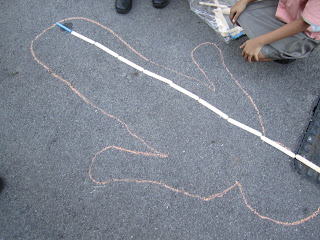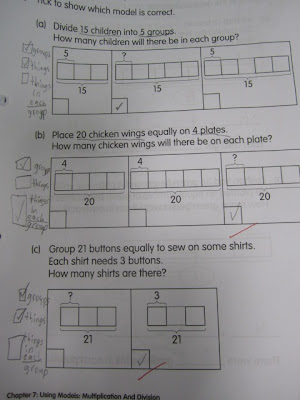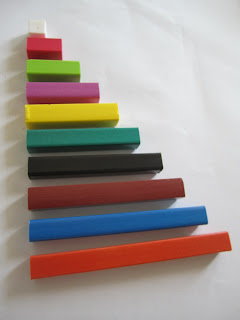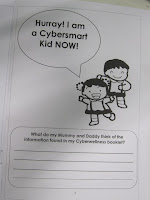Dear Parents,
Please take note.
Q1 The pupils were asked to write the answer in the box provided. The answer is 8. There are pupils who wrote 8×4. It is accepted too. However, strictly speaking, the answer 8×4 can cause ambiguity because it could mean that the child is trying to say:
4 + 4 + 4 + 4 + 4 + 4 + 4 + 4 is the same as 8×4 × 4 which is wrong.
Hence, it is more accurate to write just 8 as the answer.
Q3 Some pupils circled more than 2 answers. No marks are awarded even if one of them includes the correct answer.
Q6
Many children made a mistake for this question. There are 2 ways of solving this. [1] Pupils can do mental calculation 28 ÷ 7 = 4. [2] Pupils can draw 7 circles to represent 7 groups and draw a stick to represent 1 star in every group until he/ she counted 28 sticks. That will mean 4 sticks in each group and pupil will circle 7 groups of 4 stars.
Q9 For this question, it is insufficient if your child can circle (divide) the correct number of spiders into groups but unable to produce a correct multiplication sentence and answers. Marks are only awarded to the correct method/ answer. The pictures are meant to guide them.
Please see this post about M1A1.
Thank you for reading.
Please take note.
Q1 The pupils were asked to write the answer in the box provided. The answer is 8. There are pupils who wrote 8×4. It is accepted too. However, strictly speaking, the answer 8×4 can cause ambiguity because it could mean that the child is trying to say:
4 + 4 + 4 + 4 + 4 + 4 + 4 + 4 is the same as 8×4 × 4 which is wrong.
Hence, it is more accurate to write just 8 as the answer.
Q3 Some pupils circled more than 2 answers. No marks are awarded even if one of them includes the correct answer.
Q6
Many children made a mistake for this question. There are 2 ways of solving this. [1] Pupils can do mental calculation 28 ÷ 7 = 4. [2] Pupils can draw 7 circles to represent 7 groups and draw a stick to represent 1 star in every group until he/ she counted 28 sticks. That will mean 4 sticks in each group and pupil will circle 7 groups of 4 stars.
Q9 For this question, it is insufficient if your child can circle (divide) the correct number of spiders into groups but unable to produce a correct multiplication sentence and answers. Marks are only awarded to the correct method/ answer. The pictures are meant to guide them.
Please see this post about M1A1.
Thank you for reading.
























